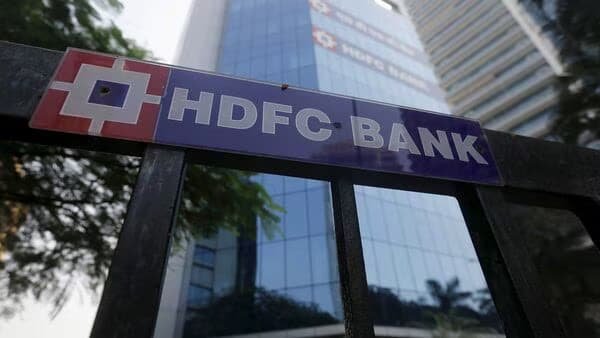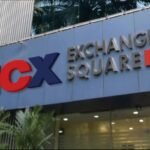Leading private sector bank in India set to divest a portion of its ownership in subsidiary HDB Financial Services gradually, as part of its strategic plans.
HDFC Bank to Sell Shareholding in HDB Financial Services
HDFC Bank Ltd is considering the sale of a portion of its shareholding in its subsidiary, HDB Financial Services, over the course of time, according to sources familiar with the matter. The decision to divest is driven by the bank’s intention to venture into similar lines of business as its subsidiary in the coming years, potentially leading to overlaps between the two entities.
Future Monetization of HDB Financial by HDFC Bank
According to one source, HDB Financial Services is subject to a listing requirement by 2025 as per regulations. Currently, HDFC Bank holds HDB as a financial investment and is planning to monetize this holding gradually. The bank, however, has not yet finalized a definite plan for the pathway to divestment.
HDB Financial Services and HDFC Bank’s Expansion Strategy
With a loan book of ₹84,000 crore, HDB Financial specializes in lending to first-time borrowers and underserved segments. Given that HDFC Bank holds a 94.7% stake in HDB Financial, it aims to incorporate these customer segments into its lending portfolio over time. Presently, the bank focuses on providing secured loans to industries and consumers, along with meeting priority sector targets.
Analysts’ Perspective on HDB Financial and HDFC Bank
Industry analysts view HDB Financial as a beta-tester for HDFC Bank, as it paves the way into new market segments ahead of the parent bank’s foray into similar lending domains.
Concerns and Market Response
Following weaker-than-expected December quarter earnings, shares of HDFC Bank experienced a significant decline. Investor apprehensions were fueled by worries about sluggish margin recovery and tepid deposit growth. Moreover, the Reserve Bank of India’s recent approval for Life Insurance Corporation of India to raise its stake in HDFC Bank may help mitigate further declines in the bank’s shares.
Deposit and Loan Dynamics
During the third quarter, retail deposits witnessed a quarter-on-quarter growth of 2.9%, amounting to ₹53,000 crore, while total deposits expanded by 1.9%, equivalent to ₹41,100 crore. These figures reflect a slowdown compared to the substantial deposit additions of ₹1.5 trillion in the April-June quarter and ₹1.1 trillion in July-September.
In contrast, the loan-to-deposit ratio rose to 110% in the December quarter from 107% in the previous quarter, indicating that the bank’s loan portfolio is outpacing deposit growth. This trend could pose funding challenges for the bank’s future expansion initiatives.
For further details, queries directed at HDFC Bank remain unanswered. It is important to keep an eye on these developments as they unfold and observe how they may influence the bank’s strategic and financial landscape in the near future.
HDFC Bank’s Funding Strategy and Liquidity Management
HDFC Bank has effectively managed an incremental credit growth of ₹1.15 trillion through a strategic approach that combined various financial measures. These measures include a sequential deposit growth of ₹41,100 crore, borrowings totaling ₹20,900 crore, a reduction in investment by ₹48,500 crore, and utilization of cash and cash equivalents amounting to ₹9,600 crore.
Liquidity Coverage Ratio Shift
As a consequence of these financial maneuvers, the liquidity coverage ratio of HDFC Bank shifted from 121% in the September quarter to 110% in the December quarter. This shift reflects the evolving liquidity dynamics within both the banking system and the bank itself. Consequently, the bank is now planning to moderate credit growth and divert its focus towards the retail deposit business.
Emphasis on Granular Deposits
A spokesperson emphasized the bank’s ongoing focus on mobilizing granular deposits, highlighting a commitment to continue this approach in the foreseeable future. The quantum of deposits the bank aims to raise will be influenced by the macroeconomic environment, specifically the liquidity within the system. Balancing liquidity coverage ratios and the credit deposit ratio will be a key priority, with loan growth being aligned with these strategic considerations.
Asset Optimization and Margin Impact
HDFC Bank is also contemplating the sale of certain assets from its loan book to alleviate high-cost borrowings. As of December 2023, the bank’s low-cost current and savings account constituted 38% of its deposit base. After the merger with Housing Development Finance Corp. Ltd (HDFC), the bank foresaw that its margin would be affected by approximately 3.7-3.8%. However, this projection was disrupted by the merger’s effect on the liquidity position, as regulatory requirements necessitated a shift towards high-quality assets.
Post-Merger Dynamics
A representative noted that the bank, post-merger, operates as a substantially transformed entity, leading to entirely different metrics such as the net interest margin (NIM). With the business mix encompassing a significant portion of mortgages and a borrowing cost comprising 21% of total funding, the starting point of the margin at 3.4% marks a new beginning for optimization and growth.
Banking System Liquidity Impact
The recent shift in banking system liquidity from a surplus of ₹9 trillion to a deficit of ₹1.4 trillion has exerted additional pressure on HDFC Bank’s liquidity position. This shift underscores the challenges arising from the evolving liquidity landscape and the concerted efforts required to navigate this transition effectively.
Impact of Merger on HDFC Bank’s Liquidity Position
Inherited Construction Finance Book
HDFC Bank assumed HDFC’s construction finance book owing to the merger, despite the parent company monetizing a substantial portion of the book. According to a source, most of the “watch list accounts” in the former HDFC Ltd’s construction finance book were resolved by the company. The residual accounts are not expected to significantly impact gross NPA formation or credit costs in the future.
Shift in Performance and Investor Reaction
Surprising December Quarter Performance
HDFC Bank, known for its consistent and impressive growth, surprised investors in the December quarter, leading to a reassessment of the bank’s performance. According to Asutosh Mishra, head of institutional equities research at Ashika Stock Broking, the last quarter showcased more positives than negatives, but missed aggressive guidance fronts such as NIMs, deposit mobilization, and branch expansion.
Impact on Guidance and Market Response
The reaction at the stock bourses prompted the bank to reconsider its approach to providing guidance. Historically, the bank had been cautious about giving guidance, a practice that the new management is now appreciating, having learned from the recent turn of events.
Post-Merger Normalization and Future Expectations
Steady Normalization of Operations
The bank is steadily normalizing its operations following the merger, with expectations that the benefits of the merger will materialize from the fourth quarter of FY24 onwards.
Learning from the Past
Former Deputy Managing Director, Paresh Sukthankar, had been cautious in providing growth targets. This conservatism stands out as a lesson for the current management, as they aim to restore the bank’s standing in the market.
In conclusion, the unexpected December quarter performance has prompted a rethinking of guidance practices within HDFC Bank, emphasizing the need for caution when offering future projections, especially in light of the bank’s ongoing post-merger operational adjustments.











